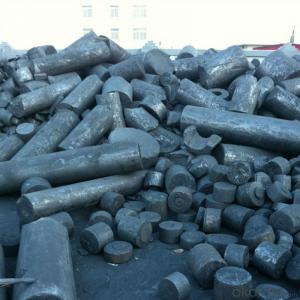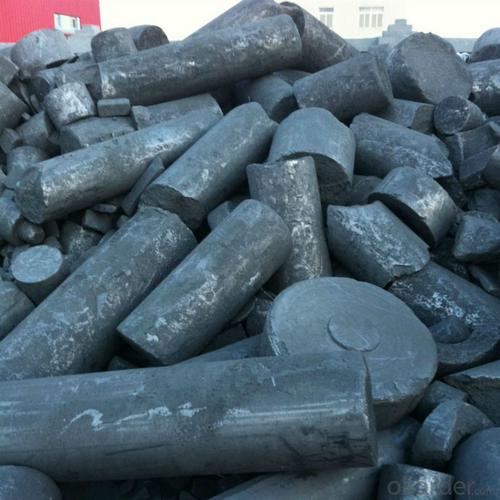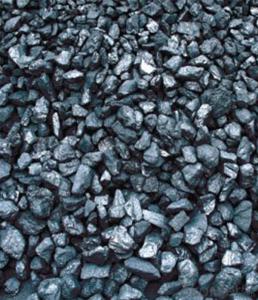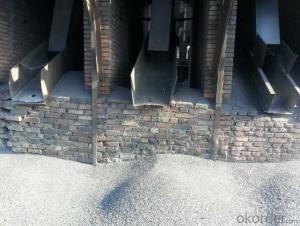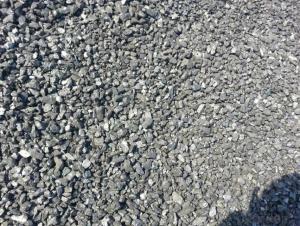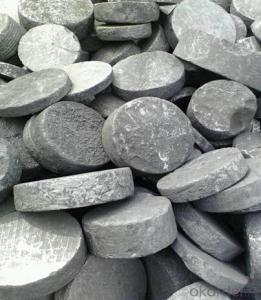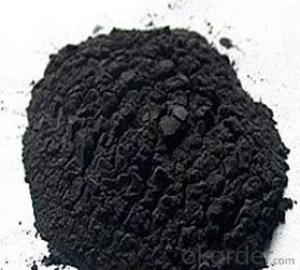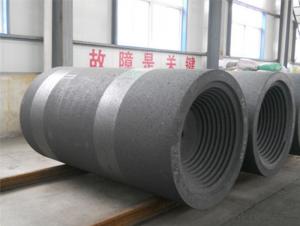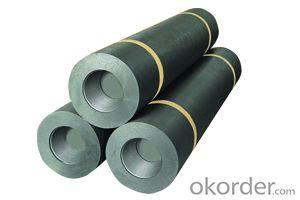Graphite Electrode Scrap high-purity as carbon additive and carburant
- Loading Port:
- Qingdao
- Payment Terms:
- TT OR LC
- Min Order Qty:
- 10 m.t
- Supply Capability:
- 5000000 m.t/month
OKorder Service Pledge
Quality Product, Order Online Tracking, Timely Delivery
OKorder Financial Service
Credit Rating, Credit Services, Credit Purchasing
You Might Also Like
Specifications:
F.C 98%min and 98.5%min, size: 100mm up
- Description & Application
Electrode block processing of carburant in steelmaking and casting, than ordinary recarburizer absorption rate is high, easy to melt, can efficiently improve the quality of products and reduce the cost.
- Technical Specification
F.C (min) |
| 98% |
S (max) |
| 0.05% |
ASH (max) |
| 1.00% |
Vm (max) |
| 1.00% |
H2O (max) |
| 0.50% |
SIZE |
| |
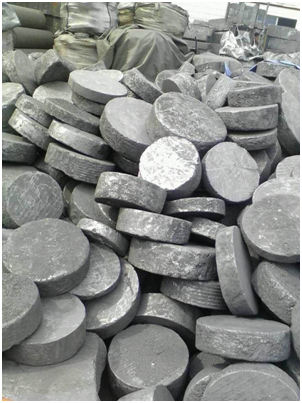
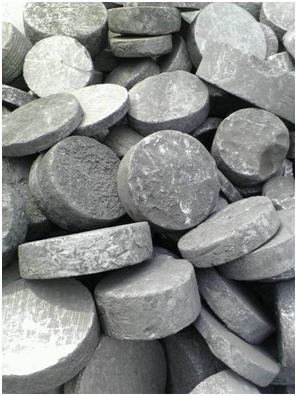
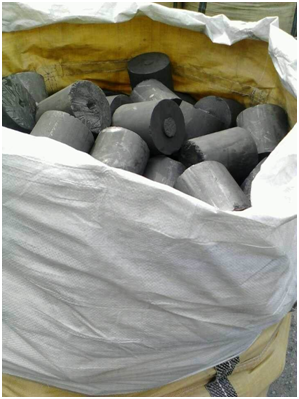
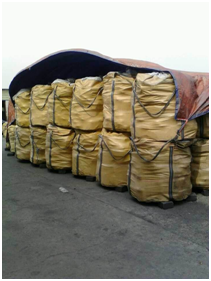
- Q: What are carbon credits and how do they work?
- Reducing greenhouse gas emissions through a market-based approach is what carbon credits are all about. The idea is to assign a value to the removal or reduction of one metric ton of carbon dioxide or its equivalent (CO2e) from the atmosphere. These credits represent the right to emit a specific amount of greenhouse gases and can be traded or sold on the carbon market. The main purpose of carbon credits is to create motivation for companies, organizations, or individuals to decrease their emissions. By establishing a price for carbon emissions, it encourages businesses to invest in cleaner technologies and practices to offset their carbon footprint. This ultimately leads to a decrease in overall greenhouse gas emissions, which contributes to the global fight against climate change. To acquire carbon credits, organizations undertake projects that reduce or eliminate greenhouse gas emissions. These projects can involve installing renewable energy sources, improving energy efficiency, planting trees, or investing in clean development mechanisms in developing nations. Independent third parties evaluate and verify each project to ensure its legitimacy and actual reduction in emissions. Once a project is approved and verified, it is given a specific number of carbon credits based on the amount of emissions it has reduced or eliminated. These credits can then be sold on the carbon market to companies or individuals seeking to offset their own emissions. Buyers can use these credits to compensate for their own emissions, effectively neutralizing their carbon footprint. The carbon market facilitates the buying and selling of carbon credits, providing a flexible and efficient approach to addressing climate change. The price of carbon credits can vary depending on supply and demand dynamics, as well as the strictness of emission reduction targets set by governments or global agreements. Overall, carbon credits are crucial in incentivizing emission reduction actions and promoting sustainable practices. They offer a financial mechanism for businesses to invest in cleaner technologies while making a positive contribution to global efforts in tackling climate change.
- Q: Appearance, hardness, electrical conductivity, use of carbon 60
- For gas storageThe unique molecular structure of C60, C60 can be used as more effective and new hydrogen absorbing material than metal and alloy. There are 30 carbon carbon double bonds, each molecule of C60 so that the C60 molecules in the double bond open can absorb hydrogen. Stable C60 hydride has known C60 C60H24, C60H36 and C60H48. in the control of temperature and pressure conditions, can be simply made by C60 C60 and hydrogen hydrides, it at room temperature is very stable, and in the 80 to 215 DEG C, C60 hydride will release hydrogen, leaving the pure C60, it can be 100% recovery, and was used to prepare C60 hydride. Compared with the hydrogen storage materials of metal or its alloys, C60 hydrogen storage has the advantages of low price, and lighter than C60, metals and alloys, therefore, the same quality of material, the hydrogen storage of C60 metal or its alloy than more.C60 not only can store hydrogen, can also be used to store oxygen. Compared with high-pressure cylinders of oxygen storage, high pressure cylinder pressure is 3.9 * 106Pa, belongs to the high pressure oxygen storage method, and storage of C60 oxygen pressure is only 2.3 * 105 Pa, which belongs to low pressure oxygen storage method. Using C60 under low pressure, large storage has many uses of oxygen in the medical departments, military departments and the business sector will be.
- Q: What are the effects of carbon emissions on agriculture?
- Agriculture is significantly harmed by carbon emissions, with various negative effects. Firstly, the presence of higher levels of carbon dioxide (CO2) in the atmosphere contributes to global warming, resulting in changes in rainfall patterns and more frequent occurrences of extreme weather events like droughts, floods, and heatwaves. These weather conditions disrupt agricultural production by reducing crop yields, damaging crops, and increasing the prevalence of pests and diseases. Higher temperatures also accelerate evaporation, which leads to soil moisture deficits and water scarcity. This has a detrimental impact on crop growth and productivity. Additionally, elevated CO2 levels can modify the nutritional composition of crops, reducing their quality and nutritional value. Research has demonstrated that increased CO2 concentrations can decrease the protein content in wheat and rice, potentially causing health issues for those who heavily rely on these staple crops. Moreover, carbon emissions contribute to the formation of ground-level ozone, a harmful air pollutant. Ozone damages plant cells, inhibits photosynthesis, and reduces crop yields. It particularly affects sensitive crops such as soybeans, wheat, and cotton. The consequences of carbon emissions on agriculture extend beyond crop production. Livestock farming is also affected, as rising temperatures and water scarcity make it more difficult to maintain adequate grazing lands and provide sufficient water and fodder for animals. Furthermore, changes in climate patterns can facilitate the spread of livestock diseases and pests, posing additional risks to the livestock industry. In conclusion, carbon emissions have far-reaching effects on agriculture, resulting in decreased crop yields, diminished nutritional value, challenges in livestock farming, and increased vulnerability to pests, diseases, and extreme weather events. It is crucial to address and mitigate carbon emissions to safeguard global food security and ensure the sustainability of agricultural systems.
- Q: What are the impacts of carbon emissions on marine life?
- Marine life is significantly affected by carbon emissions, particularly the release of carbon dioxide (CO2) from burning fossil fuels. The primary consequence is ocean acidification, which occurs when seawater absorbs excess CO2, leading to a decrease in pH levels. This acidification has harmful effects on marine organisms, especially those with calcium carbonate shells or skeletons like corals, mollusks, and some plankton. As pH levels decrease, it becomes more challenging for these organisms to construct and maintain their shells. This can result in slower growth rates, weaker shells, and increased susceptibility to predation and disease. Furthermore, the dissolution of calcium carbonate shells due to ocean acidification can disrupt the entire food chain, as many organisms rely on these shells for protection or as a food source. In addition, carbon emissions contribute to global warming, resulting in rising sea temperatures. Warmer waters can cause coral bleaching, where corals expel the colorful algae living within their tissues, ultimately leading to the loss of their primary food source and eventual death. Coral reefs are crucial ecosystems that support a diverse range of marine life, and their decline has extensive consequences for biodiversity and coastal communities dependent on them for tourism and fisheries. The impacts of carbon emissions on marine life extend beyond individual species and ecosystems. Climate change, driven by carbon emissions, can disrupt ocean currents, alter weather patterns, and affect nutrient availability. These changes can influence the distribution and abundance of marine organisms, leading to shifts in species composition and potential loss of biodiversity. It is important to note that the impacts of carbon emissions on marine life are interconnected with other stressors such as overfishing, pollution, and habitat destruction. These combined pressures worsen the vulnerability of marine ecosystems and increase the risk of irreversible damage. To mitigate the impacts of carbon emissions on marine life, it is crucial to reduce greenhouse gas emissions. This can be achieved by transitioning to cleaner and renewable energy sources, improving energy efficiency, and adopting sustainable practices. Additionally, protecting and restoring marine habitats, implementing sustainable fishing practices, and reducing pollution can enhance the resilience of marine ecosystems and promote the recovery of marine life.
- Q: What is the structure of a diamond, a form of carbon?
- The structure of a diamond, a form of carbon, is a crystal lattice arrangement where each carbon atom is covalently bonded to four other carbon atoms in a tetrahedral arrangement. This gives rise to a three-dimensional network of carbon atoms with a repeating pattern. The bonds between the carbon atoms are extremely strong, resulting in the hardness and durability of diamonds. The arrangement of carbon atoms in a diamond forms a cubic crystal system, specifically the face-centered cubic (FCC) structure. This means that each carbon atom is surrounded by a total of eight neighboring carbon atoms, creating a dense and tightly packed structure. The strong covalent bonds and the compact arrangement of carbon atoms in the diamond lattice give rise to the unique properties of diamonds, such as their exceptional hardness, high thermal conductivity, and optical brilliance.
- Q: Stability, primary carbon, two carbon, three carbon, four carbon
- In hydrocarbon molecules, with 3 hydrogen atoms of carbon atoms is called the first carbon atom (also called a carbon atom or primary carbon atom); with 2 hydrogen atoms of the carbon atoms is called second carbon atom (also called the two carbon atoms or secondary carbon atoms); with 1 hydrogen atoms of the carbon atoms is called third carbon atoms (also called the three carbon atom or tertiary carbon atoms)
- Q: Just come out to work, do activated carbon, often see carbon materials and carbon materials, I do not know what the difference, trouble you!
- Carbon refers to elements. Carbon materials usually refer to materials that contain carbon and are the main bodyCarbon is a carbon containing substance of no composition and property consisting of carbon elementsCarbon materials are usually specified, especially carbon and graphite materialsCarbon material is a broad carbon containing materialAbove.
- Q: What is carbon nanocomposite?
- Carbon nanocomposite refers to a type of material that combines carbon nanotubes or graphene with a matrix material, such as polymers or metals, to form a composite material. The carbon nanotubes or graphene are typically added in small amounts, often in the form of nanoparticles, to enhance the mechanical, electrical, and thermal properties of the composite material. Carbon nanotubes are cylindrical structures made up of carbon atoms arranged in a hexagonal lattice, while graphene is a single layer of carbon atoms arranged in a two-dimensional lattice. These carbon-based materials possess exceptional properties, such as high strength, electrical conductivity, and thermal conductivity. When incorporated into a composite material, these properties can be transferred to the overall structure, resulting in improved performance. The use of carbon nanocomposites has been explored in various industries and applications. In aerospace, for example, these materials have been investigated for their lightweight and high-strength properties, which could potentially enhance the fuel efficiency and durability of aircraft components. In electronics, carbon nanocomposites have shown promise for developing high-performance sensors, conductive films, and energy storage devices. Additionally, they have been studied for their potential applications in medical devices, automotive parts, and energy storage systems. Overall, carbon nanocomposites offer the opportunity to create materials with enhanced properties by leveraging the unique characteristics of carbon nanotubes or graphene. However, the production and scalability of these materials still pose challenges, and further research is needed to optimize their performance and cost-effectiveness for various applications.
- Q: How does carbon dioxide affect waste management processes?
- The impact of carbon dioxide on waste management processes is significant. One way it influences waste management is through the decomposition of organic waste. When organic waste, such as food scraps or yard waste, is sent to landfills, it decomposes without oxygen, resulting in the production of methane. Methane is a powerful greenhouse gas that contributes to climate change, being approximately 25 times more effective at trapping heat in the atmosphere than carbon dioxide over a 100-year period. Thus, the presence of carbon dioxide indirectly leads to increased methane emissions, exacerbating the greenhouse effect. Additionally, carbon dioxide emissions can occur during waste management activities like transportation and disposal. Vehicles that run on fossil fuels are used to collect and transport waste to landfills or incineration facilities, releasing carbon dioxide into the atmosphere. Furthermore, the incineration process itself produces carbon dioxide as a byproduct. To mitigate the impact of carbon dioxide on waste management, several strategies can be employed. Firstly, efforts to reduce waste and recycle can decrease the need for landfilling or incineration, consequently reducing carbon dioxide emissions. Moreover, implementing waste-to-energy technologies, such as anaerobic digestion or landfill gas capture, can harness the energy potential of organic waste while reducing methane emissions. Anaerobic digestion converts organic waste into biogas, which can be used for electricity or heat generation. Landfill gas capture systems collect methane emitted from landfills and repurpose it for energy production. Lastly, transitioning to low-carbon transportation options, like electric or hybrid vehicles, for waste collection and transportation can help decrease carbon dioxide emissions associated with waste management processes. In conclusion, carbon dioxide impacts waste management by contributing to methane production during organic waste decomposition and by generating emissions during waste transportation and disposal. By implementing waste reduction strategies, waste-to-energy technologies, and transitioning to low-carbon transportation options, the impact of carbon dioxide on waste management can be minimized, resulting in more sustainable and environmentally friendly waste management practices.
- Q: How does carbon dioxide affect the formation of clouds?
- Cloud formation is significantly influenced by carbon dioxide in Earth's climate system. This is because carbon dioxide acts as a greenhouse gas, trapping heat in the atmosphere and causing a global increase in temperatures. This rise in temperature affects various atmospheric processes, including the formation of clouds. One of the main ways carbon dioxide impacts cloud formation is by affecting the water cycle. Increased levels of carbon dioxide lead to warmer temperatures, which result in more water evaporating from the Earth's surface. This increased evaporation leads to a higher amount of water vapor in the atmosphere, which is essential for the formation of clouds. In addition, carbon dioxide indirectly influences cloud formation by influencing atmospheric stability and the vertical movement of air. Higher concentrations of carbon dioxide can change the temperature profile of the atmosphere, causing the lower atmosphere to warm more than the upper atmosphere. This temperature difference can alter air density, causing air to rise or sink. Rising air promotes cloud formation, while sinking air inhibits it. Moreover, carbon dioxide affects the size and properties of cloud droplets. Increased concentrations of carbon dioxide can result in changes in the microphysical properties of clouds, such as smaller droplet size and concentration. Research suggests that higher carbon dioxide levels may impact cloud lifetime and precipitation patterns. It is important to note that the relationship between carbon dioxide and cloud formation is complex and remains an active area of research. Scientists are continuously studying the intricate interactions between atmospheric gases, cloud formation, and climate change to gain a better understanding of the future implications of carbon dioxide emissions on cloud dynamics and the overall climate system.
Send your message to us
Graphite Electrode Scrap high-purity as carbon additive and carburant
- Loading Port:
- Qingdao
- Payment Terms:
- TT OR LC
- Min Order Qty:
- 10 m.t
- Supply Capability:
- 5000000 m.t/month
OKorder Service Pledge
Quality Product, Order Online Tracking, Timely Delivery
OKorder Financial Service
Credit Rating, Credit Services, Credit Purchasing
Similar products
Hot products
Hot Searches
Related keywords


